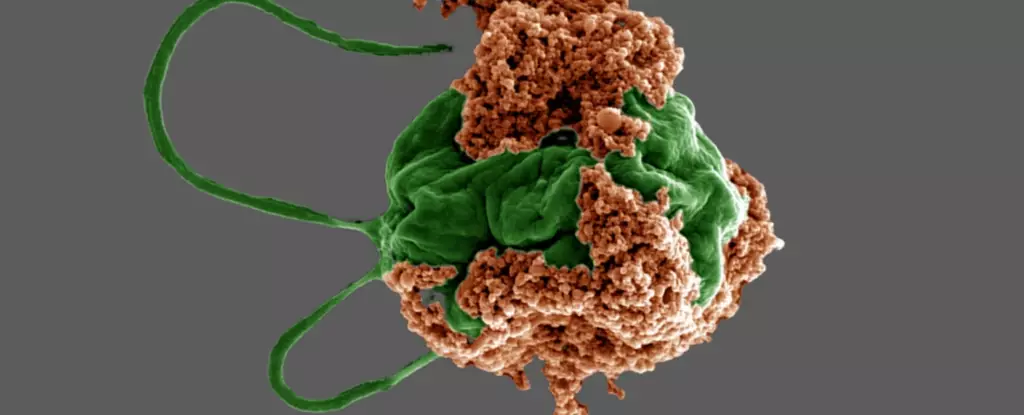The treatment of tumors that spread to the lungs, known as lung metastases, has long been a major challenge in the field of cancer therapy. Conventional chemotherapy approaches have proven to be inefficient, as they often fail to target the lungs directly and deliver drugs in sufficient concentrations to effectively kill tumors.
In an effort to address this issue, a team of researchers from the Wang lab and Zhang Research Group at the University of California, San Diego, have been tirelessly working on developing biohybrid microrobots over the past five years. These tiny devices are composed of a combination of natural and synthetic materials, making them a groundbreaking innovation in the field of medicine.
Unlike traditional synthetic microrobots, which are often rigid and difficult to manufacture, biohybrid microrobots utilize microalgae as a key component. Microalgae have the unique ability to move autonomously using flagella, allowing them to navigate through organs such as the lungs with ease. Additionally, microalgae are less toxic, more cost-effective, and simpler to produce compared to other microorganisms.
The team’s biohybrid microrobot, known as algae-NP(DOX)-robot, combines live green microalgae (Chlamydomonas reinhardtii) with nanoparticles coated in red blood cell membranes. This innovative design acts as a natural “camouflage,” enhancing biocompatibility and preventing attacks from the patient’s immune system. Within the nanoparticles is a commonly used chemotherapy drug, doxorubicin, which is released gradually once the microrobot reaches the lungs.
Through extensive testing in mice with lung metastases, the researchers found that their algae-based microrobots were able to deliver chemotherapy directly to the lungs, minimizing side effects on other organs. These microrobots not only distributed the drug efficiently across lung tissue but also evaded destruction by immune cells, allowing for sustained release of the medication.
Overall, the use of biohybrid microrobots showed a significant improvement in therapeutic outcomes, with treated mice experiencing a 40% increase in median survival time. As the microrobots are broken down by immune cells into harmless components and eliminated from the body, they present a promising approach to treating pulmonary diseases such as lung cancer, acute lung pneumonia, cystic fibrosis, and idiopathic pulmonary fibrosis.
While the integration of additional motion control strategies such as magnetic guidance or ultrasound trapping could enhance drug accumulation at target sites, the researchers are optimistic about the potential of biohybrid microrobots in revolutionizing cancer treatment. Although it may take some time before these innovative devices reach clinical use, the combination of living microalgae and cell membrane-coated nanoparticles represents a significant step towards bioengineered cancer therapies.


Leave a Reply